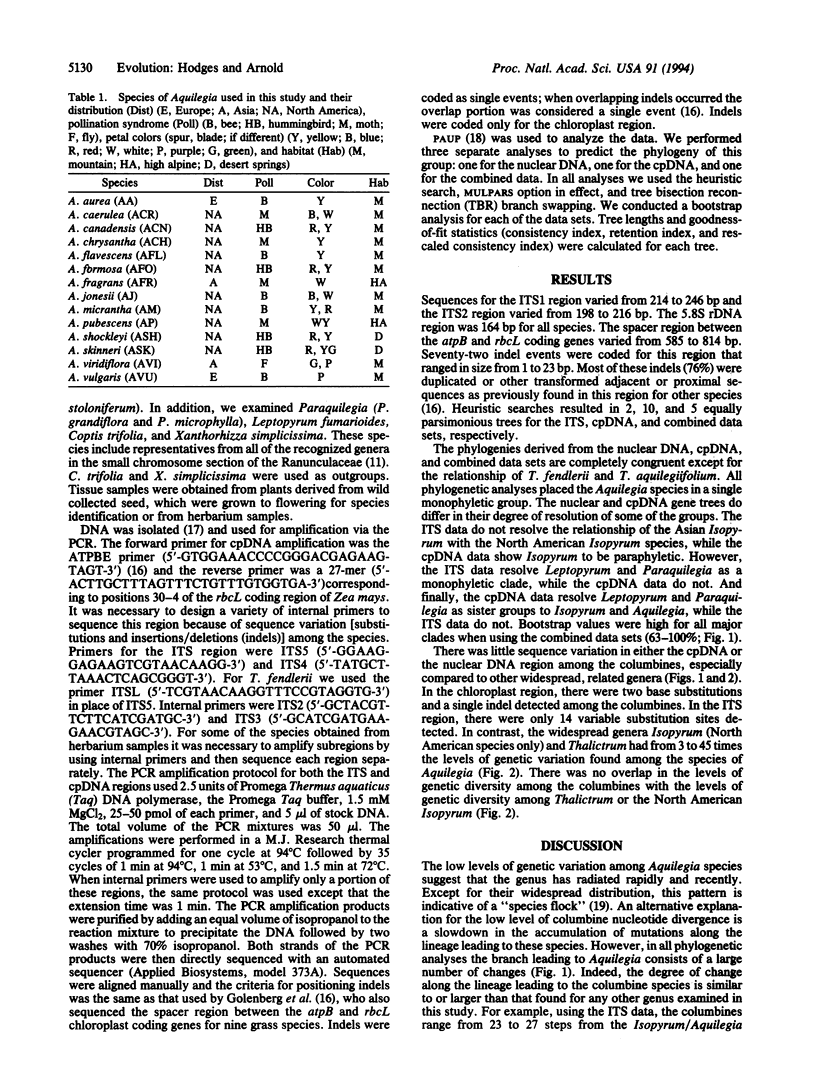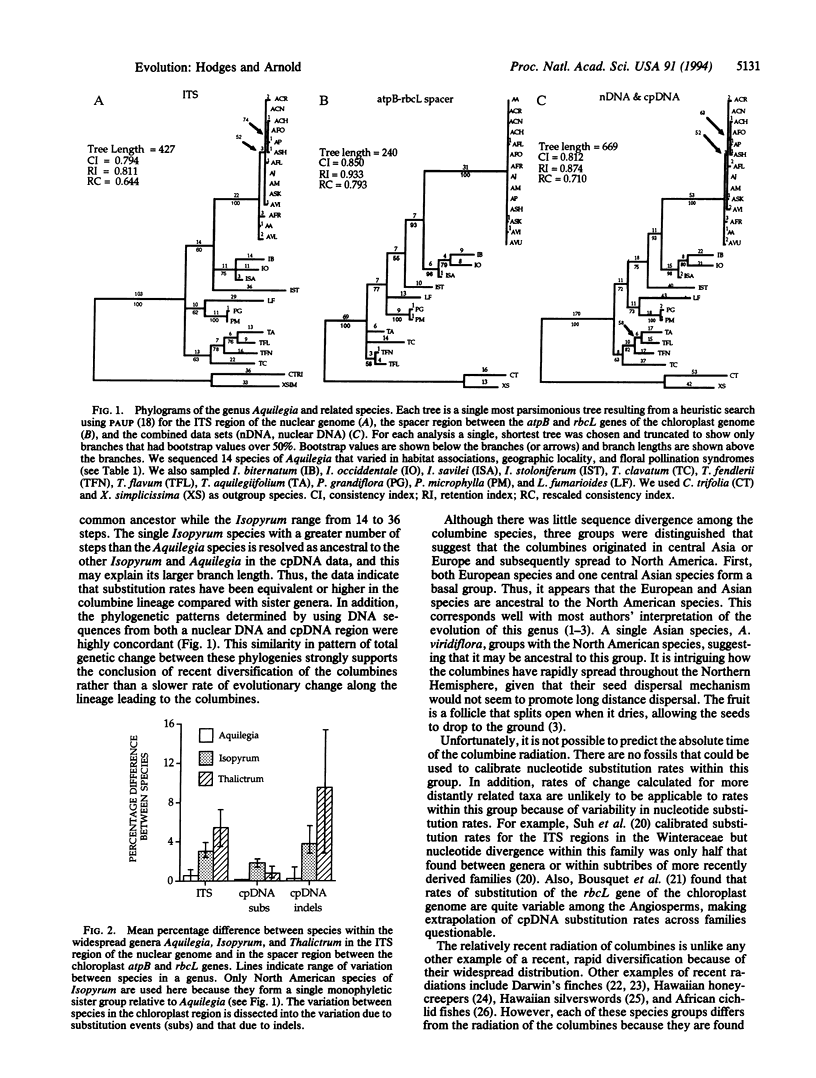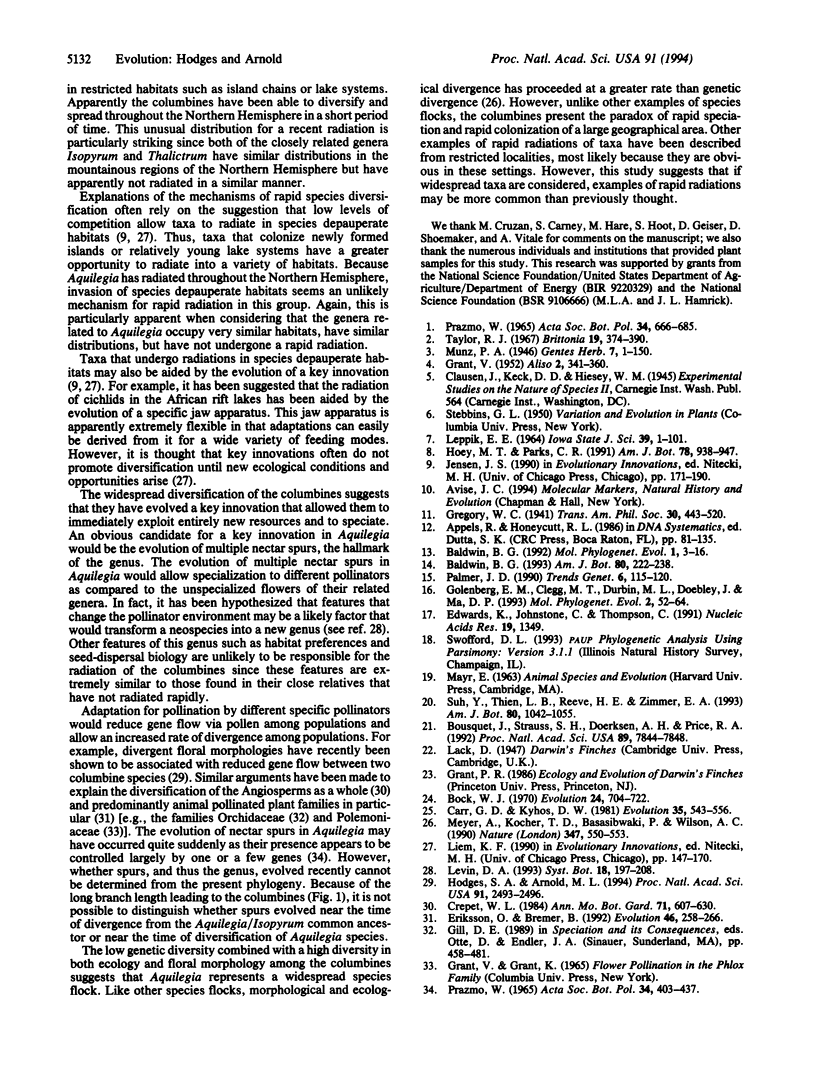Abstract
Species in the columbine genus, Aquilegia, are known for their broad variation in ecology and floral morphology. Aquilegia is also known for the large degree of intercompatibility among its species, which has led to the suggestion that the genus has arisen recently. However, intercompatibility does not always imply recent divergence and the widespread distribution pattern of the genus has suggested an older age. We constructed phylogenies for Aquilegia plus its close relatives by using nucleotide sequence data from both nuclear and chloroplast DNA. The sequence data averaged over 1250 bp per species. Among the 14 columbine species sampled from Europe, Asia, and North America only 16-bp changes and one insertion/deletion event were detected. In contrast, related genera had from 3 to 45 times this level of variation. The phylogenies derived from the chloroplast and nuclear DNA sequences were highly concordant and suggest that the columbines are the result of a recent, rapid radiation. In contrast to other examples of species flocks, Aquilegia has radiated on a widespread geographical scale. By comparison with their related taxa, we suggest that the evolution of the nectar spur in Aquilegia was a key innovation for this genus and allowed rapid speciation through specialization to specific pollinators.
Full text
PDF



Selected References
These references are in PubMed. This may not be the complete list of references from this article.
- Baldwin B. G. Phylogenetic utility of the internal transcribed spacers of nuclear ribosomal DNA in plants: an example from the compositae. Mol Phylogenet Evol. 1992 Mar;1(1):3–16. doi: 10.1016/1055-7903(92)90030-k. [DOI] [PubMed] [Google Scholar]
- Bousquet J., Strauss S. H., Doerksen A. H., Price R. A. Extensive variation in evolutionary rate of rbcL gene sequences among seed plants. Proc Natl Acad Sci U S A. 1992 Aug 15;89(16):7844–7848. doi: 10.1073/pnas.89.16.7844. [DOI] [PMC free article] [PubMed] [Google Scholar]
- Edwards K., Johnstone C., Thompson C. A simple and rapid method for the preparation of plant genomic DNA for PCR analysis. Nucleic Acids Res. 1991 Mar 25;19(6):1349–1349. doi: 10.1093/nar/19.6.1349. [DOI] [PMC free article] [PubMed] [Google Scholar]
- Golenberg E. M., Clegg M. T., Durbin M. L., Doebley J., Ma D. P. Evolution of a noncoding region of the chloroplast genome. Mol Phylogenet Evol. 1993 Mar;2(1):52–64. doi: 10.1006/mpev.1993.1006. [DOI] [PubMed] [Google Scholar]
- Hodges S. A., Arnold M. L. Floral and ecological isolation between Aquilegia formosa and Aquilegia pubescens. Proc Natl Acad Sci U S A. 1994 Mar 29;91(7):2493–2496. doi: 10.1073/pnas.91.7.2493. [DOI] [PMC free article] [PubMed] [Google Scholar]
- Meyer A., Kocher T. D., Basasibwaki P., Wilson A. C. Monophyletic origin of Lake Victoria cichlid fishes suggested by mitochondrial DNA sequences. Nature. 1990 Oct 11;347(6293):550–553. doi: 10.1038/347550a0. [DOI] [PubMed] [Google Scholar]
- Palmer J. D. Contrasting modes and tempos of genome evolution in land plant organelles. Trends Genet. 1990 Apr;6(4):115–120. doi: 10.1016/0168-9525(90)90125-p. [DOI] [PubMed] [Google Scholar]


